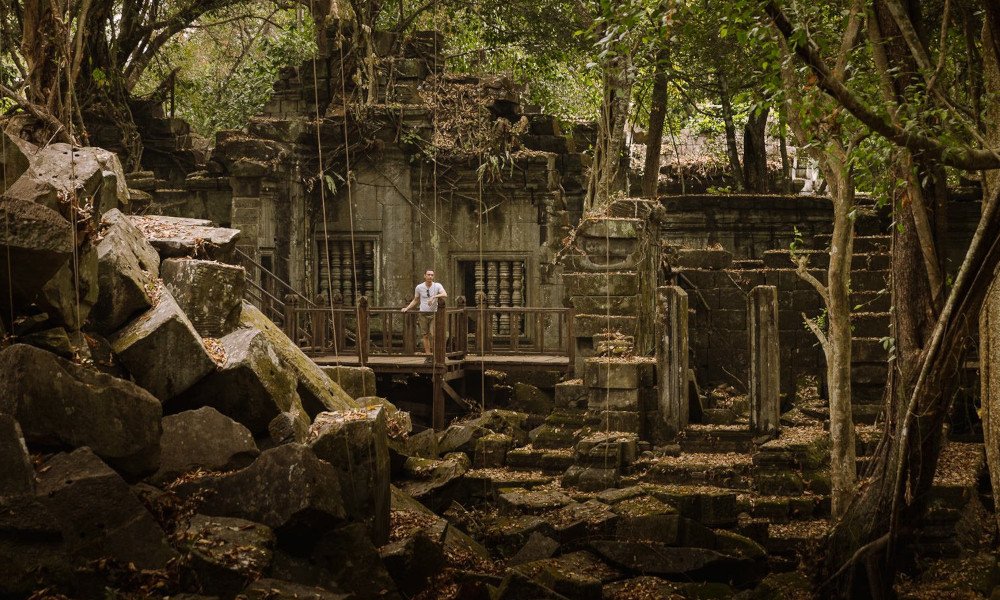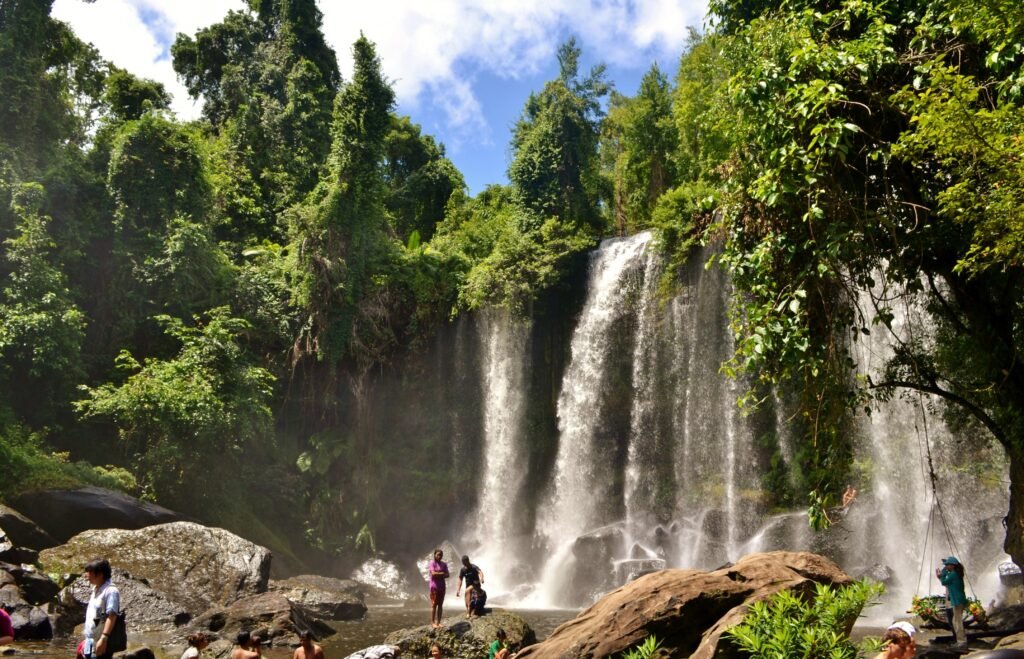Beng Mealea Temple

Beng Mealea, often referred to as the Jungle Temple, is situated away from the typical tourist routes and offers a remarkable chance to witness an Angkor temple in its natural state, having been enveloped by the jungle for centuries. This site is primarily frequented by birds and local children who engage in play among the ancient ruins.
The temple, whose name translates to “lotus pond,” remains largely in its original, unrestored condition, with its walls and towers dramatically intertwined with trees and vines. While a wooden walkway facilitates access around the crumbling edifice, more adventurous visitors have the opportunity to navigate through debris-laden passages and uncover hidden treasures within the ruins.
Experience an exclusive tour of Kulen Mountain, Beng Mealea, and Tonle Sap Lake, including transportation from Siem Reap. Discover the Reclining Buddha and the 1000...
Location and Getting There
The temple is located approximately 70 kilometers from Siem Reap. Historically, access to the temple was challenging due to poor road conditions; however, it is now a relatively straightforward journey. A private taxi ride from Siem Reap typically takes about 1 hour and 30 minutes, and with a 2-hour wait at the temple, the total cost for a round trip is expected to be between 45 and 55 USD. Opting for the smaller roads instead of National Route 6 can provide a serene drive through the picturesque Cambodian countryside. While it is feasible to take a tuk-tuk for a tour of Beng Mealea, this option may extend the travel time by an additional 30 minutes to an hour without offering significant savings in cost and with a noticeable decrease in comfort.
- Nearby attractions: For those with an entire day to dedicate to exploring some of the more secluded Angkorian sites, it may be worthwhile to combine a visit to Beng Mealea with a trip to Koh Ker or Kulen Mountain. Alternatively, one could return from Beng Mealea via National Route 6 and make a stop at the Roluos group of temples on the way back to Siem Reap.
Ticket Requirements and Site Facilities
Since January 1, 2020, Beng Mealea has been incorporated into the admission pass for Angkor Archaeological Park.
Tour Guides at Beng Mealea: There are both official and unofficial tour guides available at the temple. Additionally, some local children may show interest in assisting visitors. Given the limited historical information about the temple and the absence of intricate friezes, a guide may not enhance the experience as significantly as at other temples within the Angkor complex.
Dining Options: A few small restaurants offering Khmer cuisine can be found near the temple entrance. While the prices may be somewhat elevated compared to the quality of food provided, the convenience of having dining options in the vicinity is a factor, as there are no other food sources nearby. While some guests might opt to return to Siem Reap for lunch, supporting the local economy by enjoying an iced coffee or bai chas (fried rice) before heading back can also be a rewarding experience.
Accommodation: Beng Mealea is situated within a small village, but there are no formal guesthouses or homestays available. However, inquiring at a local restaurant might lead to securing a blanket and mat on a wooden floor in a resident’s home. Anticipate a cost of up to $5 per person per night, although there may be room for negotiation.
History of Beng Mealea
Limited information exists regarding the history of the temple, with its appeal primarily stemming from an aura of mystery and the spirit of exploration, rather than the historical and architectural complexities found in other Angkorian sites. Believed to have been constructed around the same period as Angkor Wat, this Hindu temple shares structural similarities with the latter, suggesting that Beng Mealea may have served as a prototype for the grand temple. The site is expansive, oriented towards the east, and surrounded by a broad moat. Constructed from sandstone, the carvings are relatively simple and confined to specific areas, such as lintels, platforms, or cornices, which feature a single frieze—much more subdued compared to the striking faces of Bayon or the intricate artistry of Banteay Srei. Furthermore, many of these decorative elements are scattered across the temple grounds, remnants of walls and columns that have fallen, which can enhance the charm of the site as visitors may unexpectedly encounter them during their exploration.
The temple likely served as the focal point of a town and is situated along the ancient royal highway leading to Preah Khan in Preah Vihear province. The site was cleared of landmines in the past decade, making it a viable tourist destination only recently.

